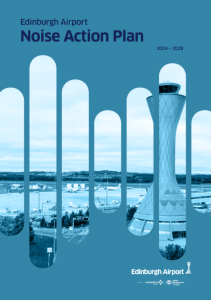Under the Scottish Government’s Environmental Assessment Act, airports must create or revise Noise Action Plans (NAPs) every five years.
Edinburgh Airport Noise Action Plan (NAP) 2024 – 2028 Adopted
Consultation on the draft NAP was open to responses from November 11, 2024, to January 31, 2025. Responses have been considered and incorporated into the plan and the NAP has been finalised and adopted by the Scottish Government. This will be in place until 2028. It sets out how they will manage and, where feasible, reduce the impact of aviation noise on communities around the airport and under the flight paths.
You can now view and download:
All documentation for this and previous NAPs is available on the Noise Lab NAP webpage
EAL gave a presentation on the NAP to the EACC February meeting – NAP Presentation
For more information and NAP FAQs visit the dedicated webpage – Edinburgh Airport Noise Action Plan
You can find out further information on Maps and NAPs on the Scottish Government NAP webpage – Scottish Noise Maps and Action Plans
Useful links

Edinburgh Airport NAP 2024 – 2028 Consultation
Edinburgh Airport consulted on the NAP 2024 – 2028 in early 2025. It has now been adopted by the Scottish Government. Follow the link for access to the documentation.
Edinburgh Airport NAP Consultation about Edinburgh Airport NAP 2024 – 2028 Consultation
Scotland’s Noise
Every five years, the Scottish Government maps noise levels across Scotland, following EU regulations. These maps inform Noise Action Plans by Aviation, Road, Rail and Local Authorities to lessen noise impact, with public input on draft plans. In 2024, collaborative modelling will update noise exposure data for Scotland.
Scotland’s Noise webpage about Scotland’s NoiseRelevant documents
FAQs
Frequently Asked Questions about Noise Action Plans
NAPs are important because excessive noise can have significant negative impacts on human health and well-being, including sleep disturbance, stress, cardiovascular problems, and reduced cognitive performance. NAPs aim to protect communities from these harmful effects by reducing noise levels and minimising noise-related disruptions.
